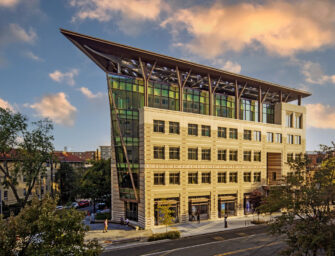Solutions for the Planet, One Community at A Time
When I was child growing up in a small town in Western Pa., the stream water in our town was bright orange. We called it “Sulphur Creek.” It was colored due to the acid run off from the strip mines surrounding the town. Thanks to science, steps have been taken to clean that waterway. Yet, the citizens of this town still face environmental concerns with hydraulic fracturing occurring in the region. Some there now worry that substances used in the fracturing fluids may be harming their water supply, which for many comes from wells. Studies are being conducted, yet baseline measures prior to hydraulic fracturing can be inconsistent due to standard testing methods that are affordable to the community.
Because many problems like this exist in communities throughout the world, AGU created the Thriving Earth Exchange (TEX) initiative. Simply put, TEX uses AGU’s vast network of scientists across all disciplines to enable communities to partner with Earth and space scientists and access the expertise needed to address problems arising from hazards, disasters, resource limitations, and climate change.
Crossing the last mile in bringing science to communities, with the goal of improving environmental and ecological health and resilience on a local level, the Thriving Earth Exchange can help in the following ways:
- Scope: TEX and AGU scientists work with communities to define locally-based projects that use Earth and space science to advance community priorities.
- Match: Identify an AGU scientist to partner with a community to work on a problem and devise a solution.
- Solve: TEX and AGU scientists help project teams make an on-the-ground impact, from coaching and making connections to providing relevant tools & resources.
- Share: Projects share their successes so other communities can adapt proven strategies for their own needs.
And guess what, at the same time, scientists are benefiting, too. By working with communities they may identify unanswered questions to advance their research studies in their universities and labs. For example, working with villagers in the Pamir Mountains has led to new approaches to using phenology to monitor climate change.

Thriving Earth Exchange charts its progress recruiting and developing community solutions since 2013.
Since its inception, through pilot testing to full implementation, TEX has benefited 35 communities. It is demonstrating the power of networks through an active group of collaborators and partners that include: ICLEI – Local Governments for Sustainability, 100 Resilient Cities, the MIT Climate CoLab, International County/City Managers Association, Experiment.com, Amazon Web Services, and the College/Underserved Community Partnership Program. By AGU’s centennial in 2019, TEX aims to reach 100 communities and impact 10 million lives. Based on early results, TEX is on a trajectory to reach that goal and hopefully exceed it.
Here are some of the promising early results:
- The cities of Washington, D.C. and Brookline, Mass., are figuring out how many extreme heat days they can expect in the future and which neighborhoods will be most impacted. Using this information, city officials can develop new policies to minimize the heat island effect and develop programs and practices to help the most vulnerable residents cope with extreme heat.
- Community leaders in Jackson, Wy., and Berlin, Md., are synthesizing new and existing data to develop strategies for restoring and protecting streams and ponds that have been polluted. Berlin will transform ponds full of chicken-farm runoff into a park for its 4500 residents, and Jackson is seeking to protect and restore Fish Creek, a tributary to the Snake River which is an economic lifeblood and water source for the 22,000 residents of Teton County.
AGU’s Thriving Earth Exchange was just announced by the White House as one of the lead partners for Resilience Dialogues, a collaborative effort between federal agencies, non-profit organizations, and private partners, to help local communities address risks associated with climate change. Read AGU’s press release.
You can learn more about TEX and get involved by: following us on Twitter @thrivingearth signing up for our email newsletter, sharing your community/science partnership story with us, and, if you are attending AGU’s 2016 Fall Meeting, by engaging with TEX at these events:
- Communities and Scientists Working Together: TEX Networking Reception
- TEX Project Launch Workshop
- Making an Impact: Stories, Tips, and Lessons Learned from Collaborating with Communities
- PA24B: Making an Impact: Stories, Tips and Lessons Learned from Collaborating with Communities I
- PA41D: Making an Impact: Stories, Tips and Lessons Learned from Collaborating with Communities II
- PA43A: Making an Impact: Stories, Tips and Lessons Learned from Collaborating with Communities III Posters
- Improving the Usability of Climate, Extreme Event, and Hazard Data and Information Products for Community Decision Makers
- PA22A: Improving the Usability of Climate, Extreme Event, and Hazard Data and Information Products for Community Decision Makers I Posters (Lightning)
- PA23B: Improving the Usability of Climate, Extreme Event, and Hazard Data and Information Products for Community Decision Makers I Posters
- PA31E: Improving the Usability of Climate, Extreme Event, and Hazard Data and Information Products for Community Decision Makers II
- PA32A: Improving the Usability of Climate, Extreme Event, and Hazard Data and Information Products for Community Decision Makers III
- Toward More Effective Decision Maker-Scientist Engagement
- PA33D: Toward More Effective Decision Maker-Scientist Engagement I
- PA34A: Toward More Effective Decision Maker-Scientist Engagement II
- PA42A: Toward More Effective Decision Maker-Scientist Engagement III Posters (Lightning)
- PA43B: Toward More Effective Decision Maker-Scientist Engagement III Posters



[…] This post was originally shared on AGU’s From the Prow blog […]
Wrong hyperlink for TEX.